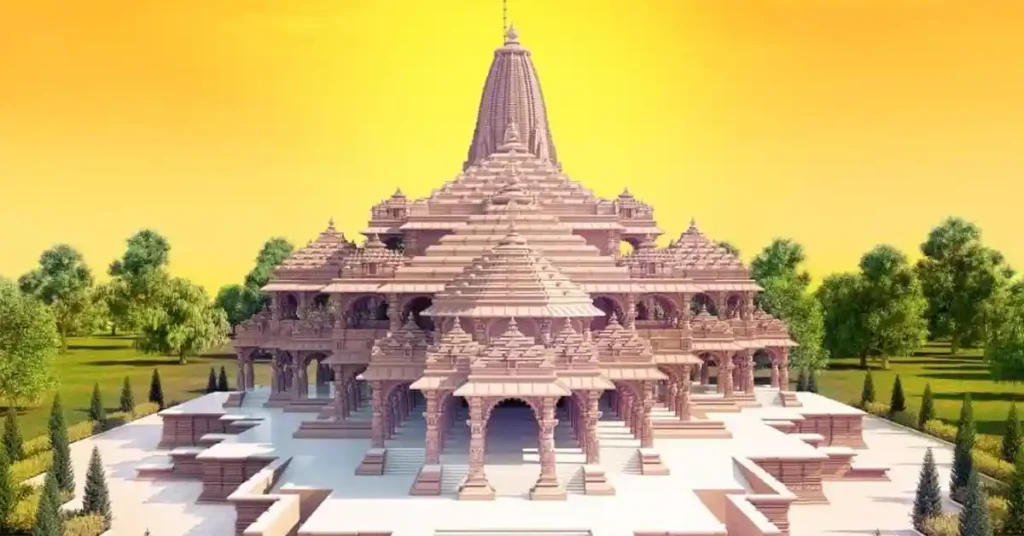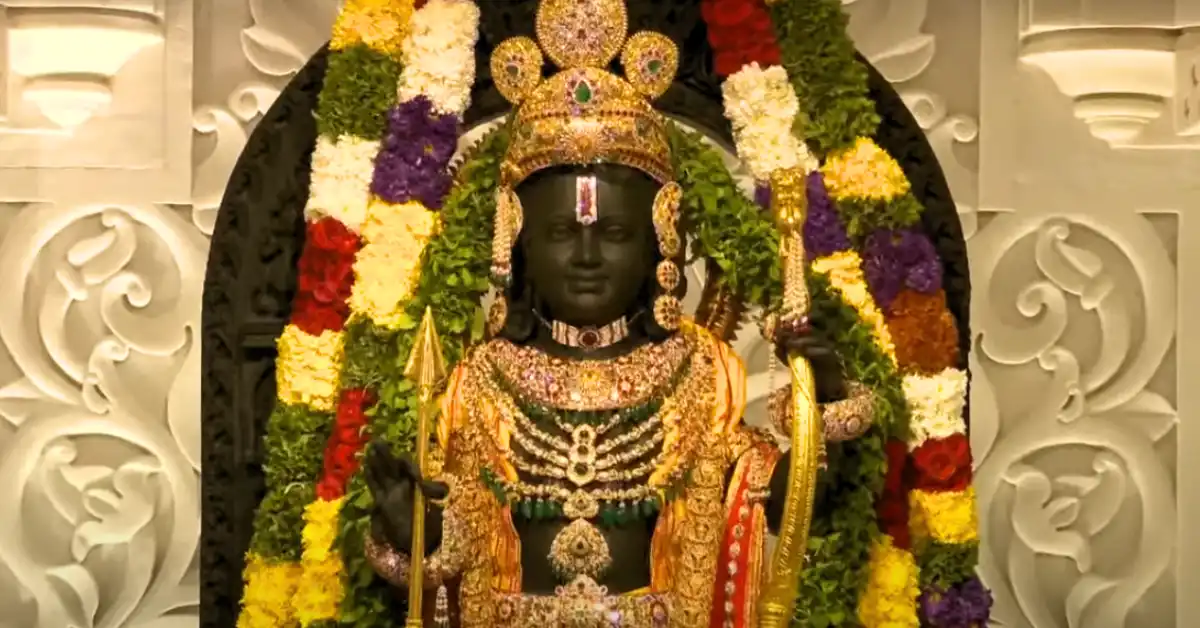The Ram Mandir in Ayodhya, India, is more than just a temple; it is a symbol of faith, resilience, and cultural heritage. Located on the banks of the Sarayu River, the holy city of Ayodhya is believed to be the birthplace of Lord Rama, a central figure in the Hindu epic Ramayana.
On a momentous 22nd January 2024, the whole nation witnessed the culmination of a decades-long saga with the grand opening of the Ram Mandir. It’s a day etched in the hearts of millions, a testament to the power of belief and the enduring legacy of one of Hinduism’s most cherished deities.
Pran Prathishtha
The heart of the opening ceremony was the “Pran Prathishtha” – the ritualistic installation of the divine spirit of Lord Rama into the sacred idols. This ancient practice breathes life into the murtis, transforming them from mere figures into embodiments of the divine. The ceremony, steeped in tradition and mysticism, marked the official beginning of Lord Rama’s divine residence in the newly consecrated temple.
A Dream Temple Takes Shape

The Ram Mandir is a symphony of architectural splendor. Crafted from Makrana marble, the purest form of white marble in India, the temple gleams with an ethereal beauty. Its intricate carvings depict scenes from the Ramayana, narrating the epic saga of Lord Rama’s life and his triumph over evil.
The sanctum sanctorum, the innermost sanctum, houses the idol of Lord Ram Lala.
Features of the Magnificent Ram Mandir
- Three-story structure: The temple rises majestically on a vast 70-acre plot, boasting three stories with a total height of 161 feet.
- 44 intricately carved gates: Each gate tells a story, depicting significant chapters from the Ramayana and showcasing India’s rich artistic heritage.
- 392 pillars: These pillars, adorned with exquisite sculptures, stand as silent sentinels, guarding the sacred space within.
- Garbhagriha (sanctum sanctorum): The innermost sanctum is a haven of serenity, housing the precious idol of Lord Ram Lala.
- Mandir Chabutra (plinth): The raised platform upon which the temple rests is adorned with beautiful floral patterns and sacred symbols.
- The cost: The estimated cost of constructing the Ram Mandir is over Rs 1,800 crore (approximately USD 217 million). The funds are being raised through donations from devotees worldwide.
Significance of the Ram Mandir
The Ram Mandir holds immense significance for Hindus not only in India but also around the world. It is a symbol of their faith and devotion to Lord Rama. The construction of the temple is seen as a fulfillment of a long-cherished dream and a testament to the resilience of the Hindu community.
The Ram Mandir is also expected to boost tourism in Ayodhya and generate employment opportunities for the local community.





[…] 👉Read Also: Dawn of a New Era: Ram Mandir Opens Its Doors in Ayodhya, India […]